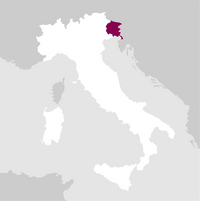Awards
Details

Perfume

Color

Taste
Serve at:
10 - 12 °C.
Longevity:
05 - 10 years

Pairings
- Start up year: 1881
- Oenologist: Luca Belluzzo
- Bottles produced: 1.500.000
- Hectares: 180
1930-1940: Angelo Jermann, who is 93 today, not only continues the family's grape-growing tradition but also keeps livestock and transforms Jermann into an all-around, successful farm.
1971-1973: Silvio Jermann, son to Angelo and Bruna and an enology graduate of both Conegliano and San Michele, revolutionizes the Jermann winery after a research sabbatical overseas, creating Vintage Tunina.
1975: Official release of Vintage Tunina, which fast achieves cult status and effectively launches Jermann's new course.
07/07/2007: Silvio inaugurates a second Jermann winery: Ruttars. Read more


| Name | Jermann Vintage Tunina 2022 |
|---|---|
| Type | White still |
| Denomination | Venezia Giulia IGT |
| Vintage | 2022 |
| Size | 0,75 l |
| Alcohol content | 13.0% by volume |
| Grape varieties | Chardonnay, Malvasia bianca, Ribolla Gialla, Sauvignon |
| Country | Italy |
| Region | Friuli-Venezia Giulia |
| Vendor | Jermann |
| Story | The name Tunina refers to the former owner of the land on which the original vineyard is located and is dedicated to Casanova's poorest lover, a housekeeper in Venice who was also called Tunina (Antonia). It is a wine awarded with many prizes and appreciation by Luigi Veronelli, Gambero Rosso and the Sommelier Italian Association. In addition, the Sommelier Italian Association awarded the 1997 and 1998 vintages. In conclusion, Cesare Pillon's article in 'Civiltà del bere' in October 2000 stated that: "the Vintage Tunina is exceptional in many other ways. No one has ever realised this until now, yet it is the most extraordinary wine to be enjoyed by itself in existence. It is a wine that makes you meditate'. |
| Origin | Dolegna del Collio (Gorizia) |
| Climate | Exposure: South-West and North-East. |
| Soil composition | Prevailing marls and sandstones belonging to the flyschoid formation of the Eocene epoch give rise to a rocky substrate that, as it transforms, forms the 'ponca' characteristic of this terroir. |
| Cultivation system | Guyot and double cordon. |
| Plants per hectare | 6,000-7,000 |
| Yield per hectare | 4,000-6,000 kg/hectare. |
| Wine making | Part of the fermentation occurs in 80-hectolitre wooden barrels and part in steel. |
| Aging | One part in 80-hectolitre wooden barrels and one part in steel, where it stays 9 months before bottling. It is then aged in glass for about 7 months. |
| Total acidity | 5.4 gr/L |
| Allergens | Contains sulphites |





